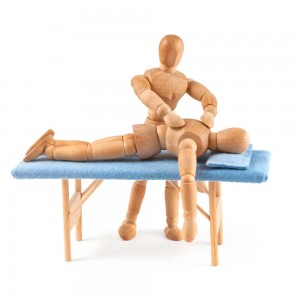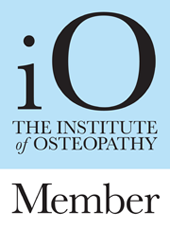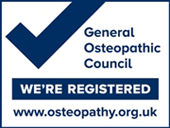Osteopathy & DOMS
 How much do you know about DOMS?
How much do you know about DOMS?
Muscle soreness is the by-product of working our muscle fibres to initiate growth and development, aka DOMS (delayed onset muscle soreness). Most people who exercise will experience some degree of DOMS. It develops after excessive and/or unaccustomed exercise. This is especially the case if the exercise in question has an eccentric component (e.g. running a marathon or downhill running). Whatever the reason, DOMS can be both uncomfortable and strangely satisfying.
Causes
DOMS is caused by micro fibrous tears (strains) within muscle groups. The microtrauma results in an inflammatory response, including changes within the intramuscular fluid.
Symptoms
- Dull muscular ache most typically developing 24 – 48 hours after new or strenuous exercise.
- Tenderness and stiffness localised to the involved muscle groups.
- Symptoms worsened by passive stretching, further emphasising the sensation of stiffness.
- Possible short-term loss of muscle strength and joint range of movement.
- Swelling of affected muscle groups.
- Symptoms eased by movement.
Prevention
- Warm up so as to prepare the relevant body parts (e.g. fast walking / slow jogging before long runs or sprints; cardiovascular exercise such as cross-training or skipping before lifting heavy weights).
- Know your own limitations: only increase your distance / reps / weights by a maximum of 10% over week and be conscious of the amount of eccentric exercise you are including in your workouts.
- Omega 3s in your diet to assist tissue repair and to help reduce inflammation. Good sources of Omega 3s include walnuts, flaxseeds and salmon.
- Warm down after intense exercise with gentle exercise (gentle jogging / walking) and stretching to release some of the lactic acid that has built up in your muscles.
Treatment
- Ice and non-steroidal anti-inflammatories (NSAIDs) can be used in the short-term for pain relief and to reduce inflammation.
- Active recovery is an excellent way to speed up recovery time and to reduce discomfort. It means exercising at a lower intensity and/or volume (e.g. walking, gentle jogging, swimming and resistance training using light weights or body-weight), choosing a type of exercise that works the specific aching muscles.
- Osteopathy and/or superficial sports massage may reduce the accumulated lactic acid within your muscles and facilitate tissue repair. Deep tissue massage should be avoided during the first 24-hours.
- Pressure garments such as compression socks can help to maintain blood flow and reduce discomfort and swelling.
- Gentle stretching after active recovery exercise (so that the muscles are warm) will stimulate oxygen-rich blood in the affected muscle areas and support tissue repair.
- Foam rollers enhance blood flow in the aching muscles by applying pressure and releasing knots and tension resulting from stress or overuse.
- Heat therapy will stimulate blood flow, support the healing process and offer pain relief (e.g. a hot bath with some Epsom salts) or a hot water bottle.
Prognosis
In most cases DOMS gradually subside and have no lasting effects, resolving within 1 – 3 days.
Contact Us
Our friendly & experienced team of osteopaths and sports massage therapists offer treatments 6-days a week, including evening and weekend appointments. Book online today if you are struggling with DOMS!
https://woburn-osteopaths.cliniko.com/bookings#service


